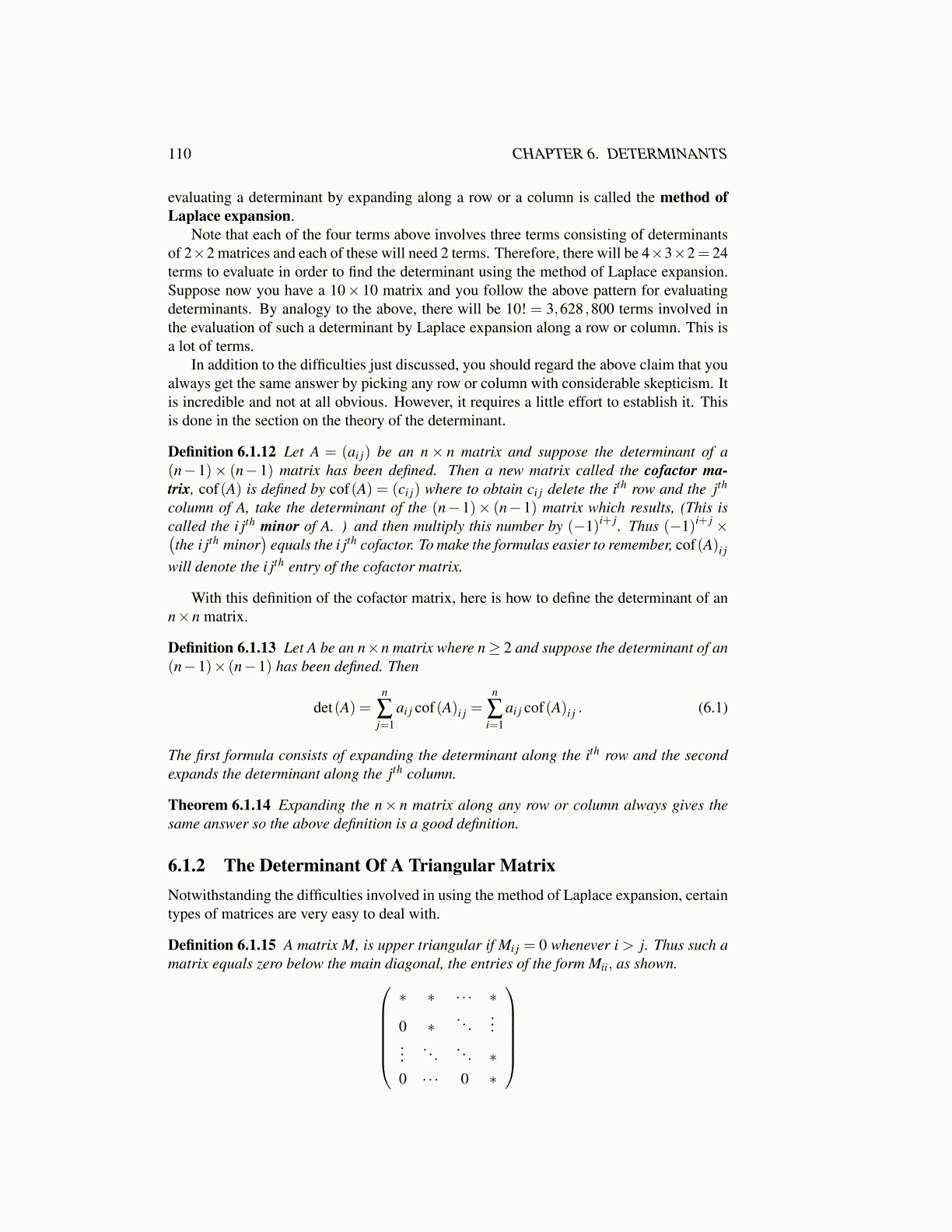
110 CHAPTER 6. DETERMINANTS
evaluating a determinant by expanding along a row or a column is called the method ofLaplace expansion.
Note that each of the four terms above involves three terms consisting of determinantsof 2×2 matrices and each of these will need 2 terms. Therefore, there will be 4×3×2= 24terms to evaluate in order to find the determinant using the method of Laplace expansion.Suppose now you have a 10× 10 matrix and you follow the above pattern for evaluatingdeterminants. By analogy to the above, there will be 10! = 3,628 ,800 terms involved inthe evaluation of such a determinant by Laplace expansion along a row or column. This isa lot of terms.
In addition to the difficulties just discussed, you should regard the above claim that youalways get the same answer by picking any row or column with considerable skepticism. Itis incredible and not at all obvious. However, it requires a little effort to establish it. Thisis done in the section on the theory of the determinant.
Definition 6.1.12 Let A = (ai j) be an n× n matrix and suppose the determinant of a(n−1)× (n−1) matrix has been defined. Then a new matrix called the cofactor ma-trix, cof(A) is defined by cof(A) = (ci j) where to obtain ci j delete the ith row and the jth
column of A, take the determinant of the (n−1)× (n−1) matrix which results, (This iscalled the i jth minor of A. ) and then multiply this number by (−1)i+ j. Thus (−1)i+ j×(the i jth minor
)equals the i jth cofactor. To make the formulas easier to remember, cof(A)i j
will denote the i jth entry of the cofactor matrix.
With this definition of the cofactor matrix, here is how to define the determinant of ann×n matrix.
Definition 6.1.13 Let A be an n×n matrix where n≥ 2 and suppose the determinant of an(n−1)× (n−1) has been defined. Then
det(A) =n
∑j=1
ai j cof(A)i j =n
∑i=1
ai j cof(A)i j . (6.1)
The first formula consists of expanding the determinant along the ith row and the secondexpands the determinant along the jth column.
Theorem 6.1.14 Expanding the n× n matrix along any row or column always gives thesame answer so the above definition is a good definition.
6.1.2 The Determinant Of A Triangular MatrixNotwithstanding the difficulties involved in using the method of Laplace expansion, certaintypes of matrices are very easy to deal with.
Definition 6.1.15 A matrix M, is upper triangular if Mi j = 0 whenever i > j. Thus such amatrix equals zero below the main diagonal, the entries of the form Mii, as shown.
∗ ∗ · · · ∗
0 ∗. . .
......
. . .. . . ∗
0 · · · 0 ∗